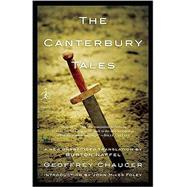
Note: Supplemental materials are not guaranteed with Rental or Used book purchases.
Purchase Benefits
What is included with this book?
| Biographical Note | p. V |
| Introduction | p. xv |
| Translator's Foreword | p. xxix |
| The Canterbury Tales | |
| General Prologue | p. 3 |
| The Knight's Tale | p. 26 |
| The Miller's Prologue | p. 85 |
| The Miller's Tale | p. 88 |
| The Steward's Prologue [The Reeve's Prologue] | p. 105 |
| The Steward's Tale [The Reeve's Tate] | p. 107 |
| The Cook's Prologue | p. 118 |
| The Cook's Tale | p. 120 |
| Introductory Words to the Man of Law's Tale | p. 122 |
| Prologue to the Man of Law's Tale | p. 125 |
| The Man of Law's Tale | p. 127 |
| Epilogue to the Man of Law's Tale [of disputed authenticity] | p. 158 |
| The Wife of Bath's Prologue | p. 159 |
| The Wife of Bath's Tale | p. 182 |
| The Friar's Prologue | p. 193 |
| The Friar's Tale | p. 195 |
| The Summoner's Prologue | p. 205 |
| The Summoner's Tale | p. 207 |
| The Cleric's Prologue | p. 223 |
| The Cleric's Tale | p. 225 |
| Chaucer's Happy Song | p. 258 |
| The Merchant's Prologue | p. 260 |
| The Merchant's Tale | p. 262 |
| Epilogue to the Merchant's Tale | p. 292 |
| Introduction to the Squire's Tale | p. 293 |
| The Squire's Tale [unfinished] | p. 294 |
| The Landowner's Prologue [The Franklin's Prologue] | p. 313 |
| The Landowner's Tale [The Franklin's Tale] | p. 314 |
| The Physician's Tale | p. 337 |
| Introduction to the Pardon Peddler's Tale [Introduction to the Pardoner's Tale] | p. 345 |
| The Pardon Peddler's Prologue [The Pardoner's Prologue] | p. 347 |
| The Pardon Peddler's Tale [The Pardoner's Tale] | p. 351 |
| The Shipman's Tale | p. 365 |
| The Host's Merry Words to the Shipman and the Prioress | p. 377 |
| Prologue to the Prioress's Tale | p. 378 |
| The Prioress's Tale | p. 380 |
| Prologue to Sir Thopas | p. 387 |
| Sir Thopas | p. 388 |
| The Host Stops Chaucer's Narration | p. 395 |
| The Tale of Melibee | p. 397 |
| The Prologue of the Monk's Tale | p. 431 |
| The Monk's Tale: De Casibus Virorum Illustrium [The Fall of Illustrious Men] | p. 434 |
| The Prologue of the Nun's Priest's Tale | p. 457 |
| The Nun's Priest's Tale of Cock and Hen, Chauntecleer and Pertelote | p. 459 |
| Epilogue to the Nun's Priest's Tale | p. 475 |
| The Second Nun's Prologue | p. 476 |
| Prayer to the Virgin Mary | p. 478 |
| The Second Nun's Tale | p. 482 |
| Prologue of the Cleric-Magician's Servant [The Canon's Yeoman's Prologue] | p. 495 |
| Tale of the Cleric-Magician's Servant [The Canon's Yeoman's Tale] | p. 500 |
| The Provisioner's Prologue [The Manciple's Prologue] | p. 520 |
| The Provisioner's Tale [The Manciple's Tale] | p. 523 |
| The Parson's Prologue | p. 530 |
| The Parson's Tale | p. 533 |
| Here the Maker of This Book Takes His Leave | p. 597 |
| Note | p. 599 |
| Table of Contents provided by Ingram. All Rights Reserved. |
The New copy of this book will include any supplemental materials advertised. Please check the title of the book to determine if it should include any access cards, study guides, lab manuals, CDs, etc.
The Used, Rental and eBook copies of this book are not guaranteed to include any supplemental materials. Typically, only the book itself is included. This is true even if the title states it includes any access cards, study guides, lab manuals, CDs, etc.
Excerpted from The Canterbury Tales by Geoffrey Chaucer
All rights reserved by the original copyright owners. Excerpts are provided for display purposes only and may not be reproduced, reprinted or distributed without the written permission of the publisher.